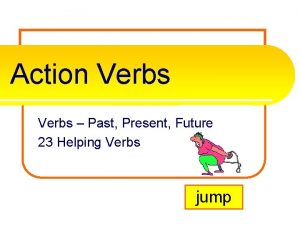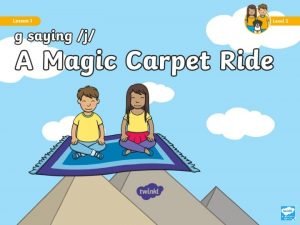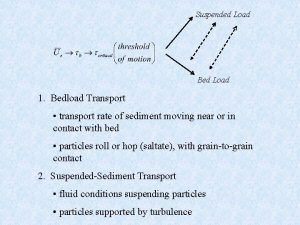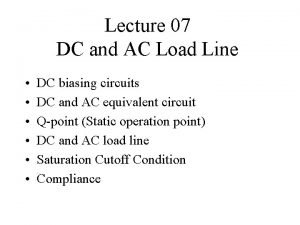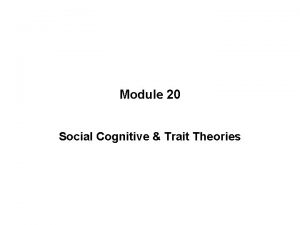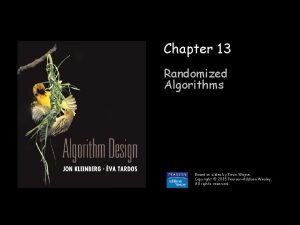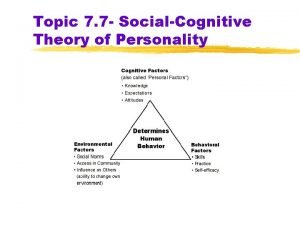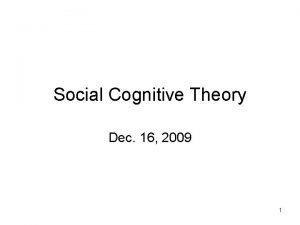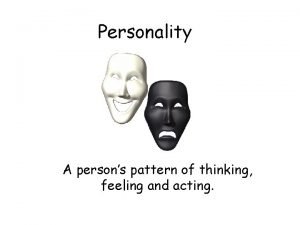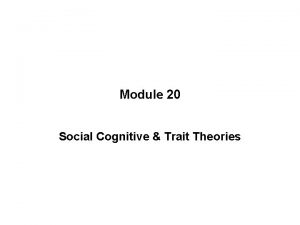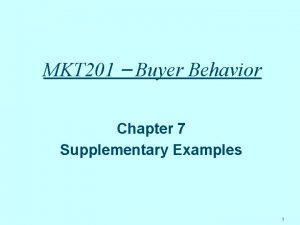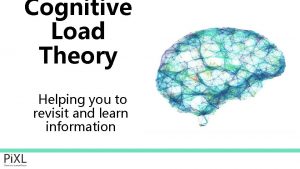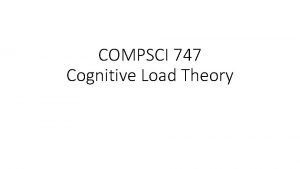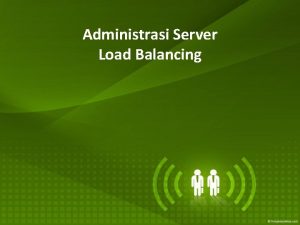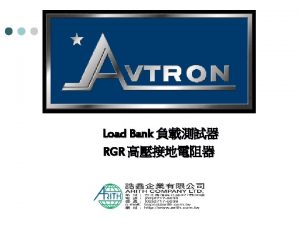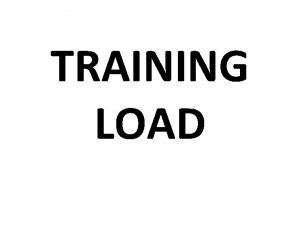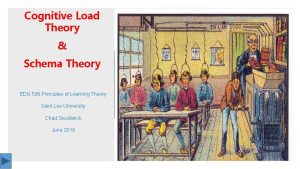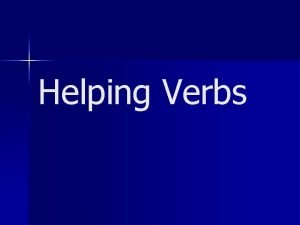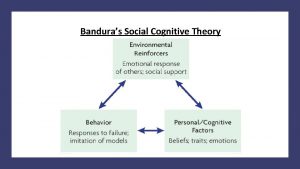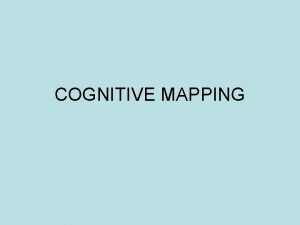Cognitive Load Theory Helping you to revisit and

















- Slides: 17

Cognitive Load Theory Helping you to revisit and learn information

‘Cognitive Load’ Theory was developed by John Sweller out of the study of problem solving. It offers a handy model to understand challenge and how to learn information which isn’t too hard, not too easy, but just right. (Sweller 1998)

What is cognitive load? Cognitive load is the amount of information our working memory can hold at any one time. The working memory is where we process information and is key to learning

How do we process information? 2 -3 seconds Huge amounts of information anywhere from a day to a life-time 5 -7 items for 5 -20 seconds Input Sensory memory Attentio n Working memory Encoding Retrieval Input Rehearsal Longterm memory

The capacity of our working memory is limited What does this mean? We must manage the ‘load’ of our working memory. We must maximise our working memory by practicing a range of strategies.

What types of working memory are there? 1. Intrinsic Load – this Can you think of a task which was really difficult? If a task or problem is really complex then it can take over most of our working memory. How did it make you feel when attempting to answer it? means how complex a task is. If a task is simple it uses less working memory.

What types of working memory are there? 2. Extraneous Load – these are the instructions you are given or how questions are written. Incomplete instructions take up space in working memory and don’t help you learn. What does this mean? You should ALWAYS ASK if you don’t understand something.

What types of working memory are there? 3. Germane Load This is the amount of work you put in to create a permanent store of knowledge.

How can you apply the cognitive load theory to help you revise and learn? 1. Break the problem down into parts. This reduces the problem space and lightens the cognitive load, making learning more effective. 2. Look at worked examples to understand how to complete tasks. 3. Take advantage of auditory and visual channels in your working memory. 4. Start with learning simple information and build on it.

What should you do to help your working memory perform better? 5. Create an environment with as few distractions as possible so turn off your phone, music or the TV. Distractions add to your working memory.

What should you do to help your working memory perform better? 6. Avoid overloading your brain with too much information at one time.

What should you do to help your working memory perform better? 7. Always review information from your lessons as you go along because this will help improve your retention, adding knowledge to your long term memory.

What should you do to help your working memory perform better? 8. Focus on one task or topic at a time. 9. Rehearse the components of a complex task so that it becomes automated, thus freeing up working memory capacity. 10. Create stories from information to be remembered or group information into more memorable categories or more accessible chunks. https: //educationendowmentfoundation. org. uk/tools/guidance-reports/metacognition-and-self-regulated-learning/

Did you know… Too much visual and visual & text displayed together compete with each other in your mind Top tips • Incorporate labels into diagrams rather than writing text in separate boxes. • Use acronyms to help you learn so information can be ‘retrieved’ easier from your memory. • Try talking through the problem out loud. • Watch videos with animation and voiceovers.

How will using the Cognitive Load Theory impact your learning? • Improve your long term memory and knowledge. • Help learn new skills more easily. • Remove unnecessary distractions. • Reduce anxiety and sense of being overwhelmed.

How are you going to use ‘Cognitive load’ to revisit information? • Choose the top 3 actions you are going to focus on. • Discuss with a partner how you are going to achieve them.

Don't overload your brain when you want to learn better
 Cognitive load theory sweller
Cognitive load theory sweller List of 23 helping verbs
List of 23 helping verbs Three apparitions in macbeth meaning
Three apparitions in macbeth meaning Lets revisit
Lets revisit Lets revisit
Lets revisit Cognitive and non cognitive religious language
Cognitive and non cognitive religious language Taper roller bearing advantages and disadvantages
Taper roller bearing advantages and disadvantages Red dot
Red dot Bed load and suspended load transport
Bed load and suspended load transport The point of intersection of dc and ac load line
The point of intersection of dc and ac load line Trait theory vs social cognitive theory
Trait theory vs social cognitive theory Probability theory in hashing and load balancing
Probability theory in hashing and load balancing Social cognitive perspective of personality
Social cognitive perspective of personality Social cognitive theory motivation
Social cognitive theory motivation Reaction formation defense mechanism
Reaction formation defense mechanism Andrea reger
Andrea reger Cognitive dissonance theory example
Cognitive dissonance theory example Cognitive learning theory was presented by
Cognitive learning theory was presented by

